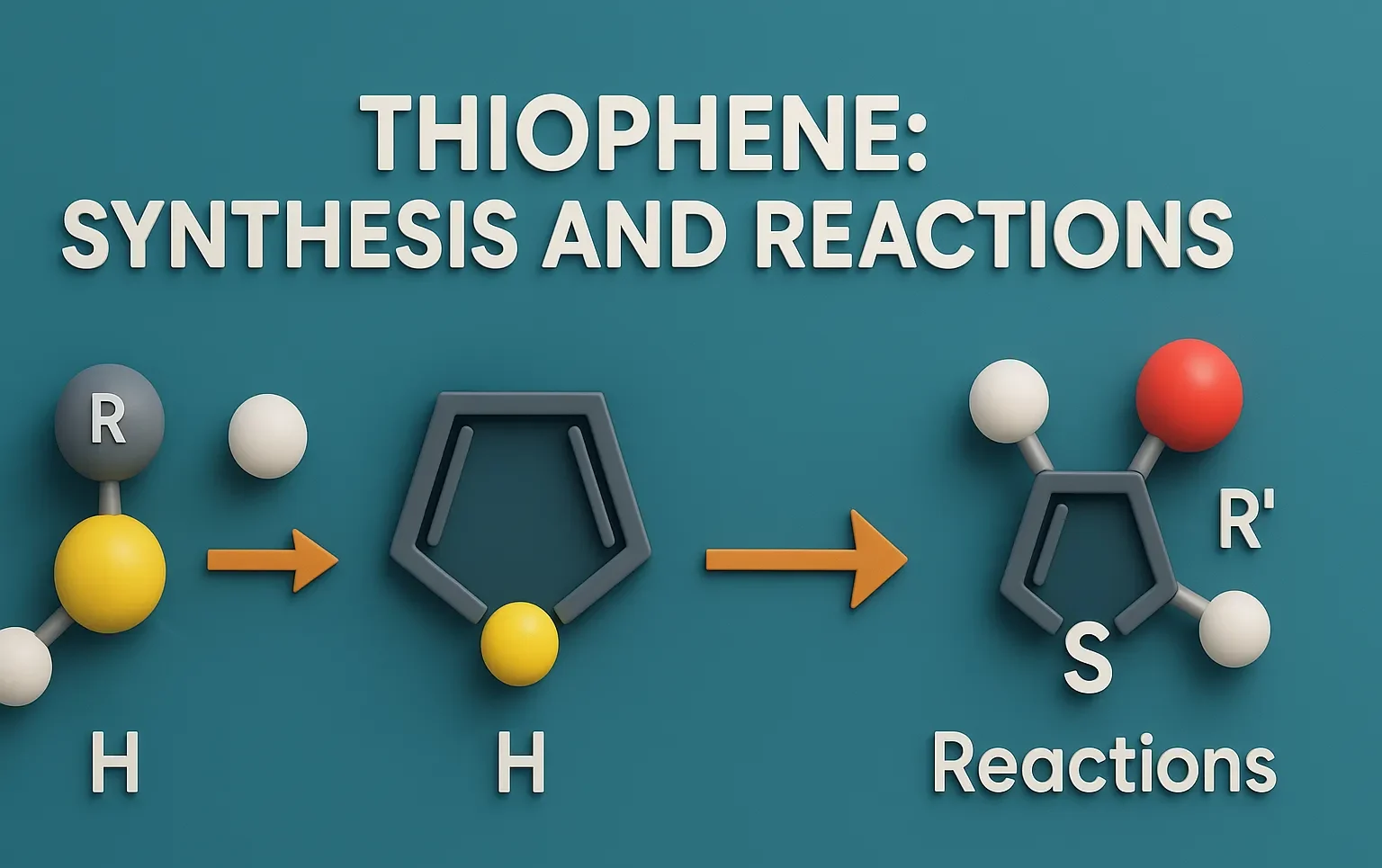Thiophene: Synthesis and Reactions include Paal-Knorr and Gewald synthesis methods, with electrophilic substitution as the main reaction pathway.
Thiophene: Synthesis and Reactions
Synthesis of Thiophene
-
Paal–Knorr Thiophene Synthesis
- Reagents: 1,4-dicarbonyl compound + phosphorus pentasulfide (P₂S₅) or Lawesson’s reagent
- Reaction:
- O=CH–CH₂–CH₂–CHO + P₂S₅ → Thiophene + byproducts
-
Fiesselmann Thiophene Synthesis
- Reagents: α-haloketone + alkyl thioglycolate (or NaSH)
- Reaction: Cyclization through sulfur incorporation
-
Gewald Reaction
- Reagents: α-cyanoester + ketone/aldehyde + sulfur + base
- Used to form 2-aminothiophenes
- CH₃COCH₃ + SCNCH₂COOEt + S → Thiophene derivative
-
Industrial Synthesis
- From butane or butene and sulfur at high temperatures (dehydrogenation and cyclization)
- Butane + S → Thiophene + H₂S + byproducts
- From butane or butene and sulfur at high temperatures (dehydrogenation and cyclization)
Advertisements
Reactions of Thiophene
Like pyrrole, thiophene undergoes electrophilic aromatic substitution (EAS) reactions readily, especially at the 2-position.
-
Electrophilic Substitution Reactions
- Halogenation
- Br₂ or Cl₂ gives 2-halothiophenes under mild conditions
- Reaction proceeds faster than benzene
- Nitration
- Carried out under milder conditions than benzene to avoid polymerization
- Example: HNO₃/Ac₂O or HNO₃/H₂SO₄ → 2-nitrothiophene
- Sulfonation
- Thiophene + SO₃ → Thiophene-2-sulfonic acid
- Friedel–Crafts Acylation/Alkylation
- More feasible than in pyrrole
- Requires mild Lewis acid (e.g., AlCl₃, SnCl₄)
- Halogenation
-
Metalation
- Lithiation at the 2-position using n-BuLi, especially when substituted
- Used for further functionalization (e.g., formylation, borylation)
-
Reduction
- Thiophene can be hydrogenated to tetrahydrothiophene
- Complete reduction gives thiolane
-
Oxidation
- Oxidation with H₂O₂ or m-CPBA leads to:
- Thiophene-1-oxide
- Thiophene-1,1-dioxide (more polar and less aromatic)
Advertisements

